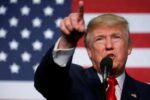Source: Tools ‹ The Mirror Inspires — WordPress
doug
Posts by Doug Green:

Time to rethink the meaning of work
A great deal has been written in recent years about the perils of automation. With predicted mass unemployment, declining wages, and increasing inequality, clearly we should all be afraid. By now it’s no longer just the Silicon Valley trend watchers and technoprophets who are apprehensive. In a study that has already racked up several hundred citations, scholars at Oxford University have estimated that no less than 47% of all American jobs and 54% of those in Europe are at a high risk of being usurped by machines. And not in a hundred years or so, but in the next 20. “The only real difference between enthusiasts and skeptics is a time frame,” notes a New York University professor. “But a century from now, nobody will much care about how long it took, only what happened next.” I admit, we’ve heard it all before. Employees have been worrying about the rising tide of automation for 200 years now, and for 200 years employers have been assuring them that new jobs will naturally materialise to take their place. After all, if you look at the year 1800, some 74% of all Americans were farmers, whereas by 1900 this figure was down to 31%, and by 2000 to a mere 3%. Yet this hasn’t led to mass unemployment. In 1930, the famous economist John Maynard Keynes was predicting that we’d all be working just 15-hour weeks by the year 2030. Yet, since the 1980s, work has only been taking up more of our time, bringing waves of burnouts and stress in its wake. Meanwhile, the crux of the issue isn’t even being discussed. The real question we should be asking ourselves is: what actually constitutes “work” in this day and age? What is “work” anyway? In a 2013 survey of 12,000 professionals by the Harvard Business Review, half said they […]

Worried about shark attacks or terrorism?
AuthorsBen Newell, Professor of Cognitive Psychology, UNSW Chris Donkin, Senior Lecturer in Psychology, UNSW Dan Navarro, Associate Professor of Cognitive Science, UNSW The world can feel like a scary place. Today, Australia’s National Terrorism Threat Level is “Probable”. Shark attacks are on the rise; the number of people attacked by sharks in 2000-2009 has almost doubled since 1990-1999. Travellers are at a high risk of getting the Zika virus in places where the disease is present, such as Brazil and Mexico. However, despite their tragic outcomes, these events are all extremely rare. Since 1996, only eight people have been killed by terrorism attacks in Australia. There have been 186 shark attacks in the 20 years from 1990 to 2009. Best estimates indicate that only 1.8 people for each million tourists would have contracted Zika at the Rio Olympics. To be fair, it is extremely difficult to judge the incidence of rare events. So how should we think about these risks? Default to safe Decision scientists study rare events by bringing people into the lab and asking them to make choices. For example, in their Nobel Prize-winning work, researchers Daniel Kahneman and Amos Tversky had people make choices between two options: one safe, one risky. A typical choice might involve a safe option where you’d walk away with $5, guaranteed. Alternatively, you could choose to take a gamble and receive $15 with 90% probability. However, if you lost the gamble, you would have to pay $35. If you’d just take the $5, then you’re not alone. Despite the gamble being clearly better than taking $5, in terms of what you would win on average (0.9 x $15 – 0.1 x $35 = $10), the loss of $35 looms so large in the mind that many of us tend to choose the […]

Trump tears down US climate policy, but America could lose out as a result
Kumuda Simpson, Lecturer in International Relations, La Trobe University US President Donald Trump has followed through on his promise to undo Barack Obama’s climate policies, signing an executive order to review his predecessor’s Clean Power Plan and any other regulations that “burden the development or use of domestically produced energy resources”. The move potentially paves the way for the United States to walk away from its commitments under the Paris Climate Agreement. America’s leadership on climate change has been patchy at best, yet under Obama the country made an important diplomatic shift – one that now looks to be fundamentally unravelling. Trump’s executive order, released on Tuesday, aims to dismantle the network of institutions and laws that regulate greenhouse emissions, and those that conduct globally important research to track climate change. The consequences, both at home and abroad, will be severe. The order comes as little surprise. Trump, after all, has previously claimed that climate change is a conspiracy perpetrated by the Chinese government to gain economic advantage at America’s expense, and made a campaign promise to undo the Paris deal. His administration has deep ties to the oil and gas industry, including Secretary of State Rex Tillerson, a former chief executive of ExxonMobil. Trump also greenlit the controversial Dakota Access pipeline. Trump’s appointment of Scott Pruitt to head the Environmental Protection Authority (EPA) caused alarm among environmental activists and EPA staff alike. Pruitt has a history of suing the EPA during his time as Attorney General of Oklahoma, and hundreds of recently released emails attest to his close relationship with the oil and gas industry. The new executive order signals that Trump does not want climate research to be carried out by government agencies such as the EPA, NASA and the Centers for Disease Control and Prevention (CDC). In […]

Climate change plays havoc with Pacific weather
Climate change is already delivering more extremes of wet and dry to the Pacific region. AUTHORS: Scott B. Power,Head of Climate Research/International Development Manager, Australian Bureau of Meteorology; Brad Murphy Manager, Climate Data Services, Australian Bureau of Meteorology;Christine Chung, Research Scientist, Australian Bureau of Meteorology; François Delage Assistant scientist, Australian Bureau of Meteorology; Hua Ye, Climate IT Officer, Australian Bureau of Meteorology This research was supported by the National Environmental Science Programme and the Australian Climate Change Science Programme. Global warming has already increased the risk of major disruptions to Pacific rainfall, according to our research published today in Nature Communications. The risk will continue to rise over coming decades, even if global warming during the 21st century is restricted to 2℃ as agreed by the international community under the Paris Agreement. In recent times, major disruptions have occurred in 1997-98, when severe drought struck Papua New Guinea, Samoa and the Solomon Islands, and in 2010-11, when rainfall caused widespread flooding in eastern Australia and severe flooding in Samoa, and drought triggered a national emergency in Tuvalu. These rainfall disruptions are primarily driven by the El Niño/La Niña cycle, a naturally occurring phenomenon centred on the tropical Pacific. This climate variability can profoundly change rainfall patterns and intensity over the Pacific Ocean from year to year. Rainfall belts can move hundreds and sometimes thousands of kilometres from their normal positions. This has major impacts on safety, health, livelihoods and ecosystems as a result of severe weather, drought and floods. Recent research concluded that unabated growth in greenhouse gas emissions over the 21st century will increase the frequency of such disruptions to Pacific rainfall. But our new research shows even the greenhouse cuts we have agreed to may not be enough to stop the risk of rainfall disruption from growing as […]

The Hillary Doctrine: Sex & American Foreign Policy
by Valerie M. Hudson and Patricia Leidl Given that much of the political science literature on women, gender, and U.S. foreign policy has primarily examined the legislative branch and public opinion, The Hillary Doctrine’s focus on the executive branch is an important and welcome contribution to the international relations field. Hudson and Leidl focus on Hillary Clinton’s prioritisation of women’s empowerment in all facets of U.S. foreign policy and national security during her tenure as secretary of state in the Obama administration, noting that “she was (and is) the world’s most influential and eloquent exponent of the proposition that the situation of women and the destiny of nations are integrally linked” (pp. xiii). The authors make clear, however, that the book is not about Hillary Clinton herself but about the Doctrine as an idea translated into policy, and hence their “foundational question” is as follows: “Do the situation, security, and status of women within a nation affect that nation’s security, stability, and prosperity? If so, then the premise of the Hillary Doctrine is sound, and warrants a prominent place in U.S. foreign policy” (p. 68). Building on Hudson’s previous work and the work of others demonstrating the strong link between women’s security and national security, and drawing on theory and extensive empirical research (interviews, field work, quantitative analysis, and detailed case studies), the authors examine the origins and implementation of the Hillary Doctrine. In her address to the UN Commission on the Status of Women in March 2010, Clinton first articulated what eventually became known as the Hillary Doctrine, stating that “the subjugation of women is a threat to the national security of the United States.” The Doctrine was officially included in the State Department’s first Quadrennial Diplomacy and Development Review of U.S. foreign policy, published in December 2010 (p. […]

The environment needs billions of dollars more: here’s how to raise the money
Paul Martin Director, Australian Centre for Agriculture and Law, University of New England Amy Cosby Researcher, Centre for Agriculture and Law, University of New England Kip Werren Lecturer in Law, University of New England Extinction threatens iconic Australian birds and animals. The regent honeyeater, the orange-bellied parrot, and Leadbeater’s possum have all entered the list of critically endangered species. It is too late for the more than 50 species that are already extinct, including bettongs, various wallabies, and many others. Despite international commitments, policies and projects, Australia’s biodiversity outcomes remain unsatisfactory. A 2015 review of Australia’s 2010-2050 Biodiversity Conservation Strategy found that it has failed to “effectively guide the efforts of governments, other organisations or individuals”. Insufficient resourcing is one cause of biodiversity loss. The challenge is impressive. Australia must tackle degradation and fragmentation of habitat, invasive species, unsustainable use of resources, the deterioration of the aquatic environment and water flows, increased fire events, and climate change. This all requires money to support private landholders conducting conservation activities, to fund research, to manage public lands, and to support other conservation activities conducted by governments, industry, and individuals. So where can we find the funds? How much money is needed? We have estimated that Australia’s biodiversity protection requires an equivalent investment to defence spending – roughly 2% of gross domestic product. Of course, such estimates are up for debate given that how much money is required depends on what we want the environment to look like, which methods we use, and how well they work. Other studies (see also here and here point to a similar conclusion: far more money is needed to achieve significantly better outcomes. Apart from government funding, private landholders, businesses, communities, Indigenous Australians, and non-government organisations contribute significantly to natural resource management. We were unable to quantify […]

Saturday in the park
The women’s march in Washington and in other American cities and towns was focussed on messages for a better way of being for all people. Around the world they marched as well and, by golly, The Donald, sitting in The Whitehouse must have wondered what the next four years will be like. Totally lacking in credibility with all the charisma of a snake salesman, The Donald has somehow become the most powerful, single individual on the planet. Although I am wondering how many people will actually believe that to be true. The position is the power and The Donald can’t be left alone with any switches! They say that the only thing to change in the U.S. since 1968 until now has been the years of Obama’s presidency. Everything else has been business as usual for the decisionmakers who hold the balance of power, control the money and have only been threatened by civil rights actions and marches against the Vietnam war. That’s getting to be a long time ago if you are really serious about change and fairness for all people With interest, we can follow if the weekend marches will bring about a new energy to the people, the Democratic party and the betterment of society. Can action now take place that brings about real change? Or was it just another stroll in the park? We can also be part of the change. -Doug Green, Publisher

Five leadership priorities for 2017
In the picture: Thais hold candle lights as they pray to celebrate the new year at Sanam Luang park in Bangkok, Thailand January 1, 2017. REUTERS/Chaiwat Subprasom. As the past year has demonstrated, leaders must be responsive to the demands of the people who have entrusted them to lead, while also providing a vision and a way forward, so that people can imagine a better future. True leadership in a complex, uncertain, and anxious world requires leaders to navigate with both a radar system and a compass. They must be receptive to signals that are constantly arriving from an ever-changing landscape, and they should be willing to make necessary adjustments; but they must never deviate from their true north, which is to say, a strong vision based on authentic values. That is why the World Economic Forum has made Responsive and Responsible Leadership the theme for our annual January meeting in Davos. As leaders in government, business, and civil society chart a course for the next year, five key challenges will warrant their attention. Firstly, they will have to come to grips with the Fourth Industrial Revolution, which is redefining entire industries, and creating new ones from scratch, owing to groundbreaking advances in artificial intelligence, robotics, the Internet of Things, self-driving vehicles, 3D-printing, nanotechnology, biotechnology, and quantum computing. These technologies have only begun to show their full potential; in 2017, we will increasingly see what used to be science fiction become reality. But, while the Fourth Industrial Revolution could help us solve some of our most pressing problems, it is also dividing societies into those who embrace change and those who do not. And that threatens our wellbeing in ways that will have to be identified and addressed. Secondly, leaders will have to build a dynamic, inclusive multi-stakeholder global-governance system. […]

Another American dream
Doc, in Back to the Future, laughed when he heard that Ronald Reagan (‘an actor’) was President of the United States. How would he react now if he heard that Donald Trump (a game show host), had indeed reached that pinnacle? Donald Trump winning the presidency is a very big and disturbing subject indeed, as it would have been had Hillary Clinton won. There are so many issues involved which talk about the unhappiness of the American people and their hand in life that I am sure the world will still be trying to figure out what is really going on even when he is out of office. Trump appealed to: the unemployed, those who had lost their jobs to government policies and to globalisation; he resonated with those opposed to Hilary’s east coast supporters, the people who live in the heartland; he appealed to blue collar workers; to all the people who didn’t care for the Obama/ Democratic style of presidency and the result of eight years of frustration, including with Obamacare. And it doesn’t end there because the issues he will deal with will be felt around the world for a long, long time. Immigration, bringing manufacturing back home from China and if he is sincere, making the lot of the average American family better. He has to deal with leaders of nations in a nice way. he will be part of making decisions concerning American security, business and attend G12 and such like conferences. He has a Republican Senate and House and will answer to them on major policy. Politically he will tow the line, which is what presidents do. So much of the presidential campaign over the past 18 months was, of course, driven by the media (after all, who else is going to tell you […]
